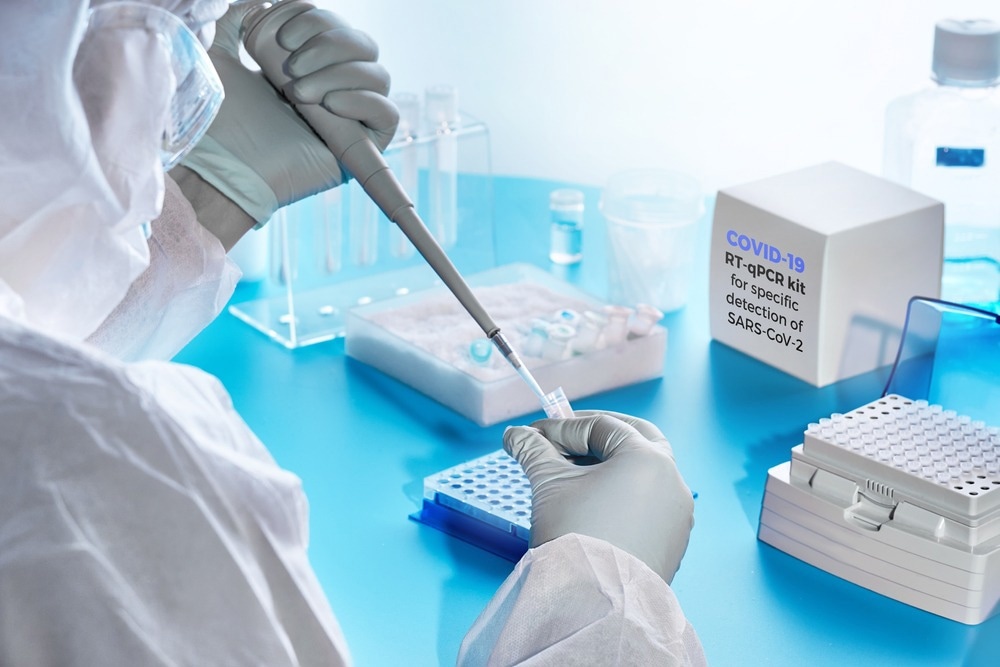In a recent study published in Emerging Infectious Diseases, researchers described ways in which national-level programs leveraged PEPFAR [president’s emergency plan for acquired immunodeficiency syndrome (AIDS) relief]-aided laboratory-based resources for severe acute respiratory syndrome coronavirus 2 (SARS-CoV-2) testing during coronavirus disease 2019 (COVID-19).
 Study: Contribution of PEPFAR-Supported HIV and TB Molecular Diagnostic Networks to COVID-19 Testing Preparedness in 16 Countries. Image Credit: tilialucida/Shutterstock
Study: Contribution of PEPFAR-Supported HIV and TB Molecular Diagnostic Networks to COVID-19 Testing Preparedness in 16 Countries. Image Credit: tilialucida/Shutterstock
Background
The United States (US) PEPFAR aids molecular human immunodeficiency virus (HIV) and tuberculosis (TB) diagnostic networks and data management systems among LMICs (low- and middle-income countries). With the availability of SARS-CoV-2 testing assays, PEPFAR-aided LMICs developed customized testing strategies utilizing existing laboratory set-ups, human resources, reporting, instrumentation, referrals, supply chains, and standardized for COVID-19 testing.
Strategies used for COVID-19 testing by each nation were unique. They were required to strike a balance between existing capacities for SARS-CoV-2 testing and the testing needs for which nations utilized efficient centralized laboratory set-ups with large testing capacities or low-efficiency decentralized laboratory set-ups located near points of COVID-19 patient care.
About the study
In the present cross-sectional and retrospective study, researchers quantified existing PEPFAR-aided population health laboratories used during the SARS-CoV-2 pandemic.
The team sent Microsoft Excel spreadsheets comprising 46 indicators assessing the usage of PEPFAR-aided molecular diagnostic networks during the SARS-CoV-2 outbreak between 1 April 2020 and 31 March 2021 to 27 PEPFAR-aided regions or nations. The spreadsheets were also sent electronically as open requests to CDC (Centers for Disease Control and Prevention) PEPFAR laboratory advisors from 24 nations and three regions across Asia, America, and Africa.
Broadly, three categories were identified which were: (i) centralized HIV EID (early infant diagnosis) and VL (viral load) and instrumentation for COVID-19 testing; (ii) PEPFAR-aided laboratory information systems (LISs) to manage COVID-19 data; and (iii) decentralized HIV and TB resources and instrumentation for COVID-19 testing. Data were obtained from CDC within-nation laboratory advisors between June and August 2021, followed by verification by staff at CDC headquarters in Georgia.
National-level COVID-19 test volumes were obtained from the Our World in Data database. Centralized laboratories were those equipped with efficient testing platforms utilized for regular EID and HIV tests and could be utilized for COVID-19 testing. Decentralized laboratories were those with equipment of any generation capacity aided by PEPFAR for HIV and/or TB testing.
The team obtained nation-specific information on the counts of PEPFAR-aided decentralized and centralized laboratories; laboratories involved in COVID-19 testing; laboratory instrumentation; TB, laboratory testing volumes for HIV, COVID-19, and EID; and the PEPFAR-aided personnel use, laboratory reporting, training, LISs, and supplies for COVID-19 testing at the two levels of laboratories.
Results
In total, active COVID-19 testing was documented for 109 PEPFAR-aided centralized HIV EID and VL testing laboratories and 138 decentralized ones situated in 16 nations. Taken together, the testing regions contributed to more than three million COVID-19 tests in 12 months.
Eleven nations implemented PEPFAR-aided LIS for managing COVID-19 testing in 121 decentralized and centralized laboratories between March and December 2020, and all 11 nations documented that rep LIS contributed to SARS-CoV-2 surveillance. Among the 11 nations, 3,341,592 COVID-19 tests were performed during the reporting period, accounting for 42.0% of the nationwide test volumes.
Dominican Republic, Ethiopia, and Zambia performed more than 500,000 COVID-19 tests in PEPFAR-aided laboratories, comprising 50%, 27%, and 49% of the nationwide test volumes, respectively. In addition, the three nations documented the greatest number of COVID-19 tests performed at PEPFAR-aided centralized laboratories compared to HIV EID and VL testing ranging between 96% (Dominican Republic) and 37% (Zambia).
Mozambique, Kenya, Nigeria, and Uganda, performed 208,000 to 402,000 COVID-19 tests, comprising 80%, 70%, 30%, and 33% of the nationwide COVID-19 testing volumes, respectively. Of 16 nations, 14, 13, 12, and 10 nations used PEPFAR-aided laboratory reporting, personnel, referral networks, and training materials, respectively, for COVID-19 testing.
Eleven nations integrated SARS-CoV-2 into HIV and TB diagnostic services across 138 PEPFAR-aided decentralized sites. Notably, none of the nations performed decentralized COVID-19 testing before June 2020. South Sudan (100%), the Dominican Republic (64%), Malawi (39%), the Democratic Republic of the Congo (11%), and Zimbabwe (27%) documented the greatest fraction of PEPFAR-aided decentralized laboratory instrument use for COVID-19 testing.
Lower percentages for GeneXpert usage were documented by nations such as Zambia, Nigeria, Uganda, and Ethiopia (250 to 400 instruments) that supported larger networks. Most COVID-19 tests were documented by Nigeria, Zambia, Lesotho, Malawi, Mozambique, and Zimbabwe, whereas COVID-19 test volumes were the least for Eswatini and the Dominican Republic.
PEPFAR-aided decentralized regions contributed to only 2.5% of the testing volumes due to less efficient instrumentation. COVID-19 testing commodities were provided to eight nations. Further, seven nations used PEPFAR-aided diagnostic connectivity solutions to report COVID-19 testing results to surveillance programs or healthcare providers.
Conclusion
Overall, the study findings showed that PEPFAR-aided diagnostic networks supplied a vast range of resources for COVID-19 diagnostic testing to 16 LMICs.